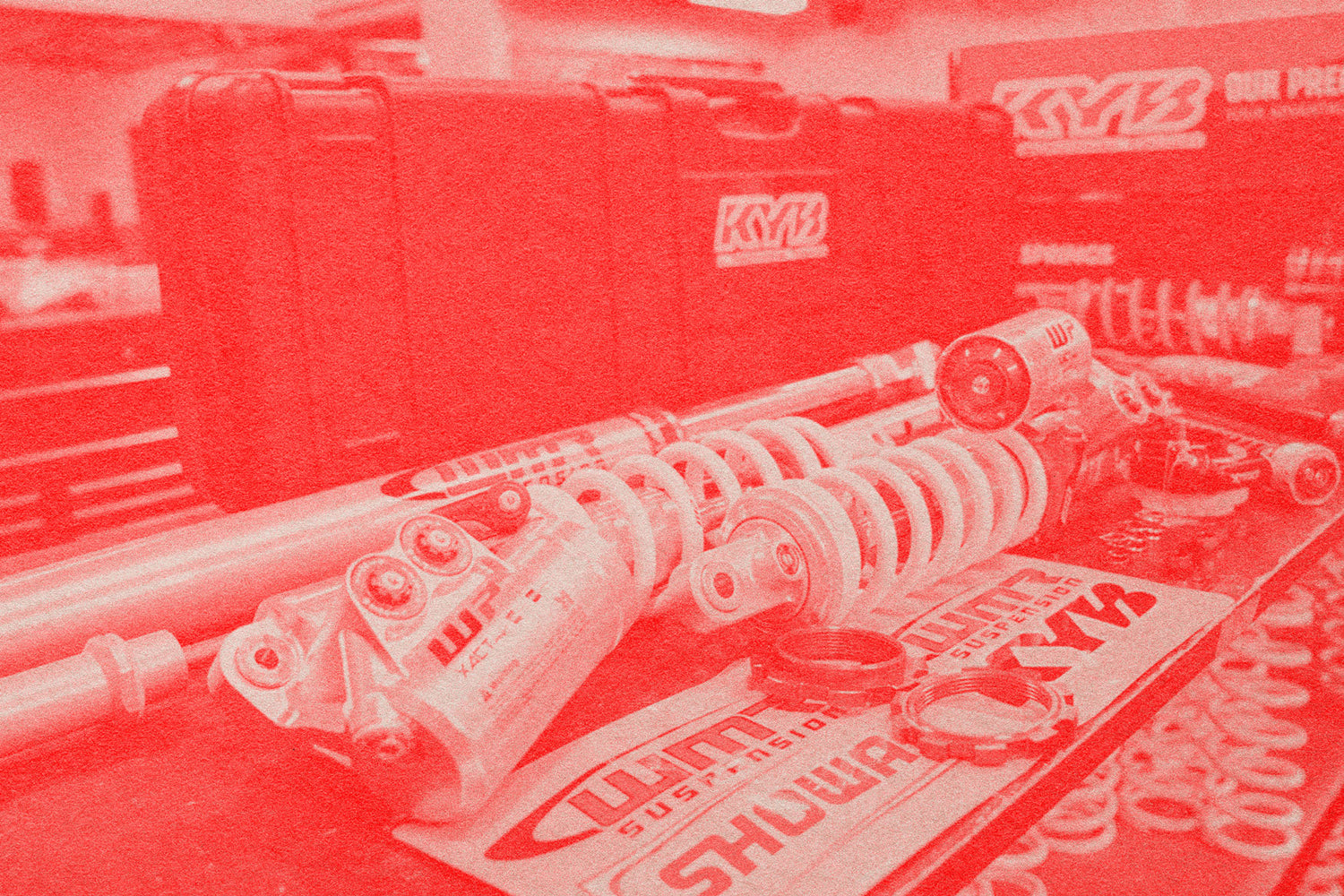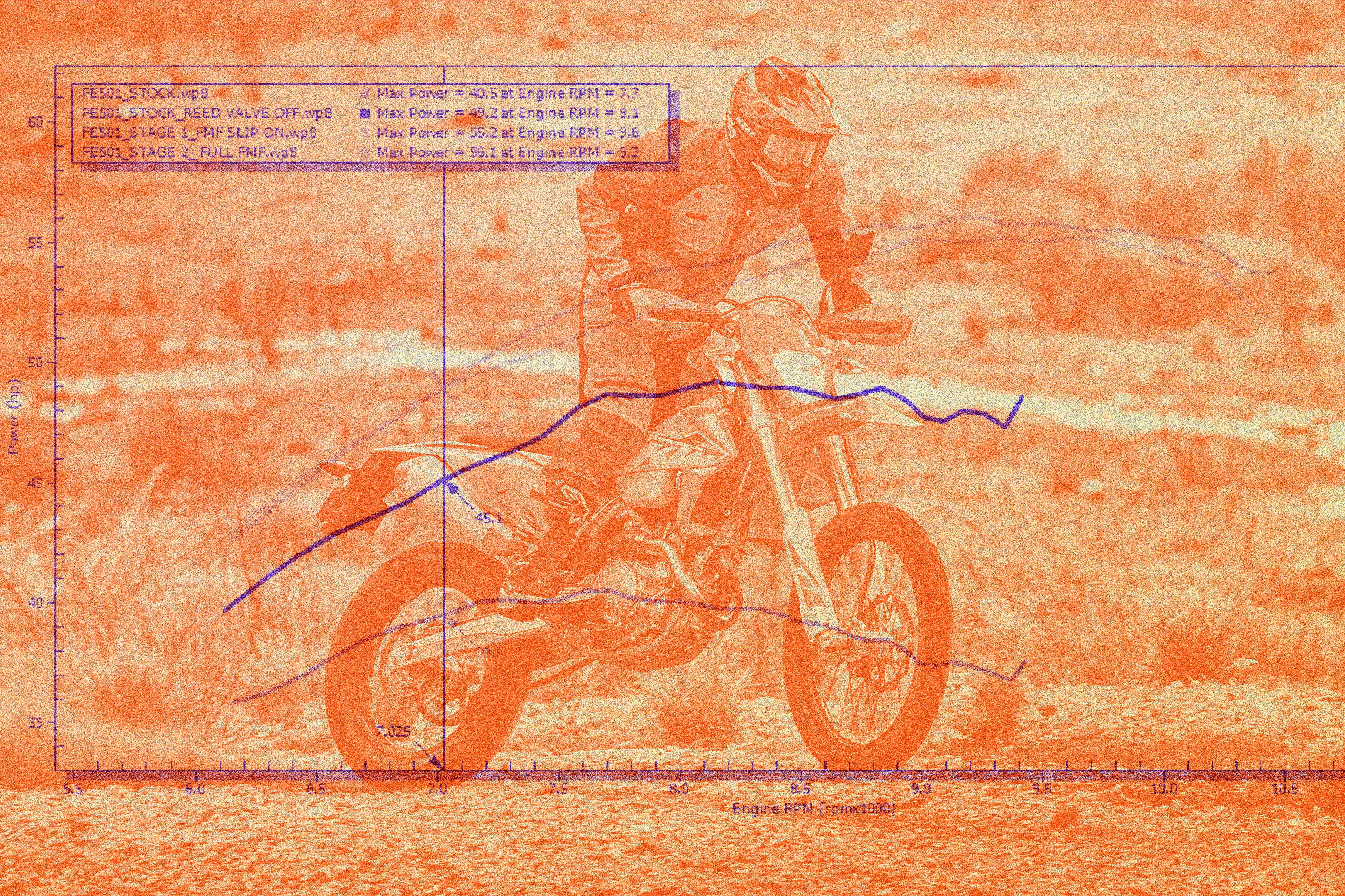There's something in common between on-road/off-road motorcycles, ATVs, UTVs, MTBs, cars, trucks, scooters, etc. In the world of vehicles with wheels and rubber tires, creating the desired traction as much as possible. To stay in control of the vehicle over our beautiful ever-changing earth, the solid ground we stand on has many different types of terrain, elevation, and weather conditions. The key for traction to stay in control of your vehicle is suspension. Without it, we would have a very unpleasant ride on our journey.
Imagine the movement of our knees and hips fixed in one position so your feet help you change directions and just the swinging motion of the legs to propel you forward like those toys that you wind up from the back and then release to watch them march forward. In a very stiff manner, even with the best shoes, there will not be much efficiency in the distance we could cover as humans through uneven terrain like rocks, mud, uphill, and downhill and we would need help finding a balance in movement. A motorcycle with no suspension (no knees or hips), even with the best tires, you are more likely to lose control. The motorcycle will lack efficiency riding over obstacles at speed, so much energy will be transferred to the chassis/rider, causing an unbalanced ride and loss of control.

Understanding the importance of your suspension can help unlock new doors to your ability as a rider. Not everyone has the same experiences on a motorcycle so learning can come at different speeds for some compared to others, and of course, this just doesn't happen overnight.
To start discussing how motorcycle suspension works, keep in mind there are many types of suspension available, so what I'm describing might not be what you, the reader, have at home in the garage. Forks and shocks(suspension) need strength to hold up the weight of the bike/rider to keep a specified height above the ground. The manufacturer will do various testing to determine the ideal ride height for their motorcycle, and the above-ground height is also known as "ride height." There is an average rider weight that the manufacturer springs for the suspension, so it's essential to check if you are within that weight range, and if not, then modifications to the suspension will have to be made. The correct ride height of the suspension can be tuned by changing the rate(force) on a mechanical spring, adjusting air pressure, or even combining both.

If all we had were springs or air inside our suspension, we would be riding on undamped pogo sticks, which is not very safe, there needs to be some control to the compressing & decompressing (rebound) motion, and that's where damping with hydraulics becomes a key player. There are many different levels of resistance control and ways to make the suspension softer at low speeds and then stiffer progressively as speeds increase. In most cases, internally inside the suspension, you will have pistons directing the flow of oil with their ports, and what is known as shims cover these ports to create variables of resistance to oil flow. Changing the arrangement/sizes of these shims will change the flow characteristics when oil wants to push against the shims because, at some point, something has to give for the suspension to move. When the force of oil flow becomes too strong to handle for a shim stack and that stack gets pushed to its max opening, in this situation, if the piston travel speed is too fast, then it's like hitting a wall in the middle of the stroke.

Note that oil is not compressible in our motorcycle world, so when forced, it will find the path of least resistance. Commonly, there will be a shim stack with much stronger resistance to help progressively support high-speed oil flow forces. Then the suspension will also have a way to create more support towards bottoming in the stroke travel to prevent a hard slam (hitting a wall). Not all suspension settings are created equal. An easy way to image what was previously discussed is to think of someone bench pressing, so a weaker suspension setting, like a weaker person with a high/heavy load, that person's arms won't even have a chance to resist the weight as it reaches their chest slowly, and if the person cannot support the weight on the bar then it will quickly slam on to the stops of an assisted bench press machine. If you're a faster or heavier rider than what the suspension was intended to support, you will find those stops quickly, just like in the bench press example.

There are ways to tune the suspension for those high-speed hits when you want the suspension to have more strength to keep you from bottoming out with a harsh sensation, and there are also ways to tune for slower speeds when you want the suspension to copy the ground actively with comfort not feeling rock solid. The majority want progressive suspension because the faster ground speed you have, the more force/strength you want the suspension to make, and with slower ground speed, the suspension will feel softer with less strength. I often like to compare what happens inside suspension in action to a musical orchestra, and every instrument, like suspension parts, plays its role in some way to come up with the final outcome. Everything internally works together. If one fails, the final result will not be the same, even if that failure is caused by a tiny air bubble that can turn into hundreds, given the conditions to do so. Air is compressible, so hydraulic damping forces (strength) will decrease.
It's tough to feel what is best for your motorcycle suspension because of how fast things are happening, and most of us adjust our riding form to compensate for something the suspension could be doing better and not even know it. Endless possibilities for suspension tuning. That's why it's important to choose your suspension shop wisely. Reaching out for professional help at WMR Competition Performance Suspension department can become the game changer for you, the rider, or for a rider you know, to progress and gain confidence on the motorcycle.There's something in common between on-road/off-road motorcycles, ATVs, UTVs, MTBs, cars, trucks, scooters, etc. In the world of vehicles with wheels and rubber tires, creating the desired traction as much as possible. To stay in control of the vehicle over our beautiful ever-changing earth, the solid ground we stand on has many different types of terrain, elevation, and weather conditions. The key for traction to stay in control of your vehicle is suspension. Without it, we would have a very unpleasant ride on our journey.
Imagine the movement of our knees and hips fixed in one position so your feet help you change directions and just the swinging motion of the legs to propel you forward like those toys that you wind up from the back and then release to watch them march forward. In a very stiff manner, even with the best shoes, there will not be much efficiency in the distance we could cover as humans through uneven terrain like rocks, mud, uphill, and downhill and we would need help finding a balance in movement. A motorcycle with no suspension (no knees or hips), even with the best tires, you are more likely to lose control. The motorcycle will lack efficiency riding over obstacles at speed, so much energy will be transferred to the chassis/rider, causing an unbalanced ride and
loss of control.
Understanding the importance of your suspension can help unlock new doors to your ability as a rider. Not everyone has the same experiences on a motorcycle so learning can come at different speeds for some compared to others, and of course, this just doesn't happen overnight.
To start discussing how motorcycle suspension works, keep in mind there are many types of suspension available, so what I'm describing might not be what you, the reader, have at home in the garage. Forks and shocks(suspension) need strength to hold up the weight of the bike/rider to keep a specified height above the ground. The manufacturer will do various testing to determine the ideal ride height for their motorcycle, and the above-ground height is also known as "ride height." There is an average rider weight that the manufacturer springs for the suspension, so it's essential to check if you are within that weight range, and if not, then modifications to the suspension will have to be made. The correct ride height of the suspension can be tuned by changing the rate(force) on a mechanical spring, adjusting air pressure, or even combining both.

If all we had were springs or air inside our suspension, we would be riding on undamped pogo sticks, which is not very safe, there needs to be some control to the compressing & decompressing (rebound) motion, and that's where damping with hydraulics becomes a key player. There are many different levels of resistance control and ways to make the suspension softer at low speeds and then stiffer progressively as speeds increase. In most cases, internally inside the suspension, you will have pistons directing the flow of oil with their ports, and what is known as shims cover these ports to create variables of resistance to oil flow. Changing the arrangement/sizes of these shims will change the flow characteristics when oil wants to push against the shims because, at some point, something has to give for the suspension to move. When the force of oil flow becomes too strong to handle for a shim stack and that stack gets pushed to its max opening, in this situation, if the piston travel speed is too fast, then it's like hitting a wall in the middle of the stroke.
Note that oil is not compressible in our motorcycle world, so when forced, it will find the path of least resistance. Commonly, there will be a shim stack with much stronger resistance to help progressively support high-speed oil flow forces. Then the suspension will also have a way to create more support towards bottoming in the stroke travel to prevent a hard slam (hitting a wall). Not all suspension settings are created equal. An easy way to image what was previously discussed is to think of someone bench pressing, so a weaker suspension setting, like a weaker person with a high/heavy load, that person's arms won't even have a chance to resist the weight as it reaches their chest slowly, and if the person cannot support the weight on the bar then it will quickly slam on to the stops of an assisted bench press machine. If you're a faster or heavier rider than what the suspension was intended to support, you will find those stops quickly, just like in the bench press example.

There are ways to tune the suspension for those high-speed hits when you want the suspension to have more strength to keep you from bottoming out with a harsh sensation, and there are also ways to tune for slower speeds when you want the suspension to copy the ground actively with comfort not feeling rock solid. The majority want progressive suspension because the faster ground speed you have, the more force/strength you want the suspension to make, and with slower ground speed, the suspension will feel softer with less strength. I often like to compare what happens inside suspension in action to a musical orchestra, and every instrument, like suspension parts, plays its role in some way to come up with the final outcome. Everything internally works together. If one fails, the final result will not be the same, even if that failure is caused by a tiny air bubble that can turn into hundreds, given the conditions to do so. Air is compressible, so hydraulic damping forces (strength) will decrease.
It's tough to feel what is best for your motorcycle suspension because of how fast things are happening, and most of us adjust our riding form to compensate for something the suspension could be doing better and not even know it. Endless possibilities for suspension tuning. That's why it's important to choose your suspension shop wisely. Reaching out for professional help at WMR Competition Performance Suspension department can become the game changer for you, the rider, or for a rider you know, to progress and gain confidence on the motorcycle.
















Leave a comment
This site is protected by hCaptcha and the hCaptcha Privacy Policy and Terms of Service apply.